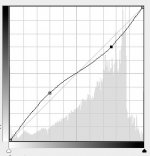I like your passion, Mani, and as you say it is borne out of a lot of experience with digital processing, although am not sure your arguments shine through as well as they could.
In any case to pick up on two of your points, either for the purpose of clarification if you did not mean them in the way below, or perhaps to provide an opposing view if they were your intended point of view;
But I can take a crap shot with my iPhone, pull it into Snapseed, crop it 1:1, run a couple of filters, and have a really stunning image in 15 seconds.
I think its important to distinguish popular aesthetic from the quality of images here, and think you probably do it in your post. Snapseed/ Instagram/ Holga all give an image an immediate visual impact, but think in most cases think the aesthetic disguises any deficiencies in image content. In a lot of cases image content is not there with these images, but the asethetic is a hot one and is what draws people to these images, even if they're lacking in content. I think the worm will turn at some point, and any of these images depending on the aesthetic to prop them up will simply fall to the wayside. Such is the way of trends.
Many photographers will live with images, over a period of time, to evaluate them for this exact purpose. Images with style and no substance will simply fall away after the initial impact dies off, and that is why many photographers choose to evaluate images over prolonged periods of time.
But my film images - even the failures - can have endless fascination because they are the result of real craft and real vision and real struggle and 'real light', however inadequate.
I disagree here. Such images may mean something to you because you struggled to produce them, but ultimate quality is all that matters to viewers at the end of the day, so don't expect any mediocre images whose production was a struggle, to mean anything to anyone but you. Its either a good image or not, and 'honesty' of process will not make any image any better. Harsh, but true.


